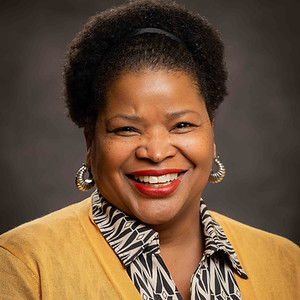
Who We Are
NASC's Mission
The mission of the National Association of Sentencing Commissions is to facilitate the exchange and sharing of information, ideas, data, expertise, and experiences and to educate individuals on issues related to sentencing policies, sentencing guidelines, and sentencing commissions.
Executive Committee

Michelle Hall
President
Executive Director
North Carolina Sentencing and Policy Advisory Commission

Director
Pennsylvania Sentencing Commission


Taylor Tarnalicki
Secretary
Research Director
District of Columbia Sentencing Commission

Victoria Gonzalez
Executive Director
Illinois Sentencing Policy Advisory Council

Carl Reynolds, J.D.
Senior Legal and Policy Advisor
Council of State Governments Justice Center

Stephanie White-Thorn, Esq.
Executive Director
Missouri Commission on Racial and Ethnic Fairness
Matthew Kleiman, Ph.D.
Vice President
Ken Sanchagrin, J.D., Ph.D
Treasurer
Executive Director
Oregon Criminal Justice Commission
Overview of NASC

History
The roots of the National Association of Sentencing Commissions (NASC) were established in a very informal manner through a desire to share information and experiences among individuals involved in the area of criminal sentencing. Historically, sentencing has not been viewed as a focal point for criminal justice study among individuals outside of the Judiciary. Unlike corrections and law enforcement, limited attention was directed toward the development, implementation or analysis of sentencing policy at either the national or state level.
In the late 1970s and early 1980s, several states, including Minnesota, Pennsylvania, and Washington, revisited sentencing policy by establishing Sentencing Commissions to examine and analyze sentencing practices within the individual states. Issues such as racial, gender, and geographical disparity in sentencing were raised as concerns. The Commissions compiled sentencing data, examined trends, and identified the primary goal or purpose of sentencing within their state.
The early states were aware of the each other’s efforts and shared information among themselves. However, there was not an organized or formalized disbursement of information or experiences with other states, with the exception of an occasional phone call or a request for specific information, such as copies of legislation. Insufficient time had passed since the formation of the early Commissions to conduct evaluations of the impact of the sentencing policy changes or to determine their success in achieving their stated goals. In addition, the sentencing policy changes among the early states, while similar in some aspects, were structured differently depending on each state’s criminal code and sentencing structure. While each state implemented sentencing reform in a broad sense, the specific changes and details of that reform were unique to each individual state.
Over the next decade, additional states throughout the country developed interest in examining their sentencing policies for a number of reasons, including disparity in sentencing issues, state resource allocations, prison expansions, and rising crime rates. As individual states struggled with the broad goal of sentencing reform, the need for information regarding the experiences of other states became increasingly important, not only from the policy perspective but from an implementation perspective as well.
In 1992, Kevin Reitz, then at the University of Colorado Law School, hosted a Symposium on Sentencing Reform in the States. The symposium included various legal and academic speakers who presented numerous legal, philosophical, and implementation issues associated with sentencing reform. In addition, states with Sentencing Commissions were also invited to attend. For the first time, states were able to engage in discussions among themselves and with experts in the field of sentencing policy. They were able to share experiences, compare ideas, and learn from each other regarding both successes and failures. The symposium experience made the state commissions realize how important and necessary it was to share information and ideas directly.
As a result of the 1992 symposium, state commissions decided to meet annually to provide a venue for learning and sharing sentencing policy information. Subsequently, the first informal sentencing commission conference was held in Washington State in 1993. Conferences continued annually and the organization assumed a more formal structure by incorporating and adopting the title of the National Association of Sentencing Commissions (NASC) in the late 1990s. An Executive Committee was established, bylaws were adopted, and officers were elected. All state commissions and the United States Sentencing Commission were invited to participate in the newly-formed organization.
Currently, the NASC membership includes representation from roughly two dozen states with formally established sentencing commissions or policy councils and states considering the creation of a sentencing commission.

Organizational Structure
NASC is chartered and incorporated as a nonprofit organization under the laws of the State of Delaware. An Executive Committee elected by the membership at the annual meeting governs the organization. The Executive Committee is comprised of seven members and includes a President, Vice-President, Treasurer, Secretary, and members at large. Executive Committee members may serve two consecutive three-year terms.
Membership to NASC is open to any individual who works or serves on a sentencing commission or similar government body charged with sentencing policy responsibilities. Membership may also include representatives of other government agencies directly involved in the development of state or federal policy and any other academic, public or private employee, student or other individual interested in sentencing.
NASC holds an annual membership meeting, at which time elections for the Executive Committee and officers are held. During this meeting, any business before the organization is presented to the membership and a financial accounting is provided. In addition, the Executive Committee meets monthly through telecommunication conferences to prepare for the annual meeting and address any organizational issues as they arise.
Business Meeting Minutes